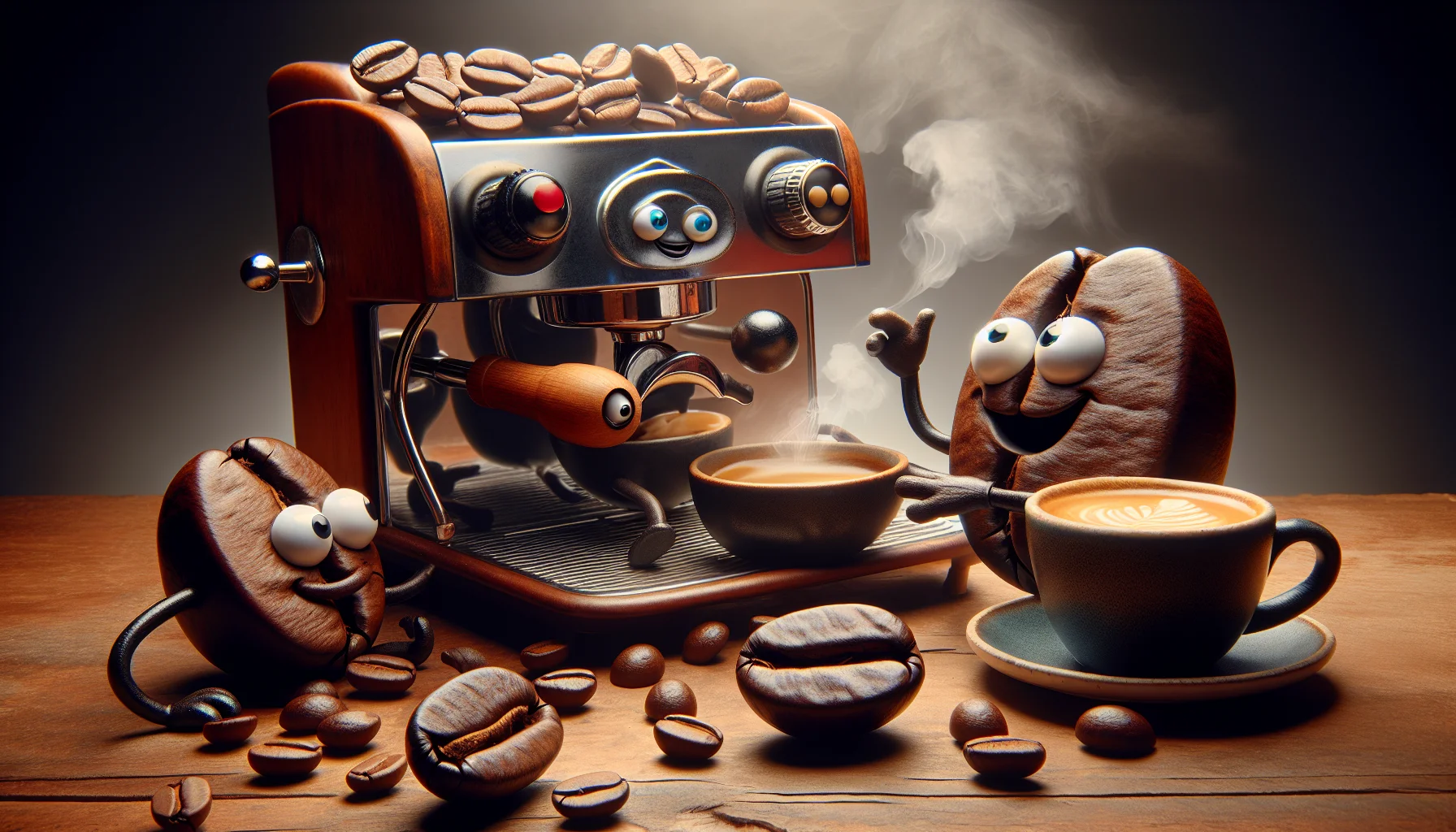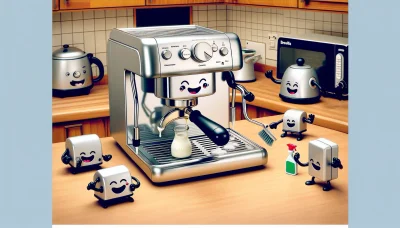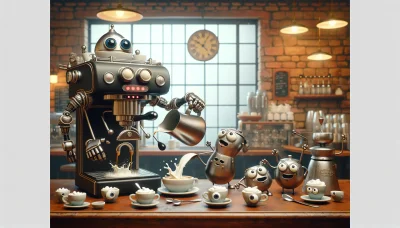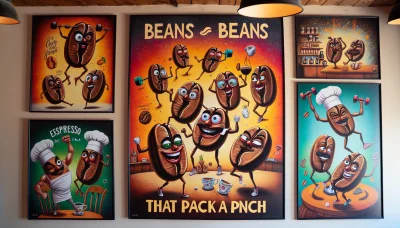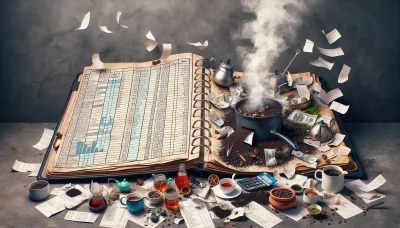Best coffee beans for espresso Quiz
Test Your Knowledge
Question of
The Ultimate Guide to the Best Coffee Beans for Espresso
Choosing the right coffee beans is crucial for crafting the perfect espresso. The beans not only influence the flavor and aroma of your espresso but also affect the crema and body of the final shot. With a myriad of options available, understanding the characteristics of espresso-friendly beans can elevate your coffee experience. This guide aims to navigate you through the essentials of selecting the best coffee beans for an exquisite espresso experience.
What Makes a Great Espresso Bean?
The secret to a perfect cup of espresso lies in the quality and characteristics of the beans used. A great espresso bean is defined by its type, roast level, and origin. Firstly, the type of bean plays a crucial role. Arabica beans are often preferred for their superior flavor and aroma, offering a smoother and more complex profile than Robusta beans. However, some blends incorporate Robusta for a bolder taste and enhanced crema. Secondly, the roast level significantly impacts the espresso's flavor. Dark roasts are traditionally favored for espresso due to their strong, rich flavor and lower acidity. A dark roast helps in creating the classic bitter yet sweet taste associated with a good espresso. Lastly, the origin of the beans contributes to the espresso's unique flavor notes. Beans from Latin America often provide a balanced and mild flavor, while African beans can add a distinctive fruity or floral note, and Asian beans might contribute a bold and earthy quality. The ideal espresso bean is a harmonious blend of these characteristics, tailored to the drinker's preference.
Top 7 Coffee Beans for Espresso
-
Volcanica Coffee - Ethiopian Yirgacheffe
Origin: Ethiopia
Description: Known for its bright acidity and floral notes, this coffee offers a complex flavor profile with a light, fruity finish ideal for espresso. -
Lavazza Super Crema Espresso
Origin: Italy
Description: A blend of Arabica and Robusta beans, offering a rich body, creamy texture, and hints of hazelnut and brown sugar, perfect for a smooth espresso. -
Blue Bottle Coffee - Espresso Blend
Origin: Various
Description: This blend is designed specifically for espresso, offering a balanced and sweet flavor with a full body and chocolatey notes. -
Stumptown Coffee Roasters - Hair Bender
Origin: Latin America, East Africa, and Indonesia
Description: A complex blend that delivers a sweet and savory experience with notes of citrus and dark chocolate, making a vibrant espresso. -
Intelligentsia - Black Cat Espresso
Origin: Various
Description: A hallmark blend that is syrupy and sweet, with a balanced acidity, smooth body, and flavors of dark fruit and chocolate. -
Kicking Horse Coffee - Cliff Hanger Espresso
Origin: Indonesia, Central & South America
Description: A medium roast with bright fruit notes and a chocolatey smooth finish, offering a silky texture perfect for espresso. -
Peet’s Coffee - Espresso Forte
Origin: Latin America
Description: A blend of beans that offers a deep flavor with hints of bittersweet chocolate and high notes of fruit and floral, resulting in a rich espresso.
Single-Origin vs. Blends: Which is Better for Espresso?
Single-origin coffee beans come from one specific place, whether it's a single farm, a collection of farms within the same region, or from a single country. They are known for their unique flavor profiles, which can vary greatly depending on the soil, climate, and altitude where they are grown. These coffees can offer a distinct and nuanced taste, allowing drinkers to experience the specific characteristics of that region. On the other hand, blends are made by combining beans from multiple origins. The goal of blending is to create a balanced, consistent flavor by combining the unique qualities of each bean. Blends are often crafted to achieve a specific taste or to complement milk-based espresso drinks, providing a more uniform flavor profile that might be lost in single-origin coffees when mixed with other ingredients. When it comes to espresso, the choice between single-origin and blends can greatly affect the flavor. Single-origin beans can offer a more complex and potentially more vibrant espresso shot, showcasing the coffee's unique characteristics. Blends, however, are designed to deliver a consistent and balanced espresso, often with a fuller body and richer crema, making them a popular choice for espresso lovers seeking a reliable and harmonious flavor.
How to Grind Coffee Beans for the Perfect Espresso
The key to brewing the perfect espresso lies in the grind size and consistency of your coffee beans. For espresso, the grind should be fine, but not too powdery, to ensure the water can extract the coffee flavors efficiently without over-extraction. An inconsistent grind can lead to uneven extraction, resulting in a shot that’s either too bitter or too sour. To achieve the best results, it is recommended to use a burr grinder rather than a blade grinder. Burr grinders provide a more uniform grind size and consistency, which is crucial for the high pressure of an espresso machine. Investing in a good quality grinder is essential for anyone serious about their espresso.
Brewing the Perfect Cup: Tips and Techniques
- Start with high-quality, fresh beans for the best flavor.
- Use filtered water to improve your espresso's taste and protect your machine from scale buildup.
- Ensure your espresso machine is properly calibrated, including the correct temperature and pressure settings.
- Grind your coffee beans immediately before brewing to preserve their flavor and aroma.
- Use the right grind size, which should be fine but not too powdery, to ensure even extraction.
- Tamp the ground coffee with consistent pressure to avoid uneven extraction.
- Monitor your extraction times: a good espresso usually takes about 25-30 seconds to brew.
- Regularly clean and maintain your espresso machine to keep it in optimal condition.
- Experiment with different beans, grind sizes, and extraction times to find your perfect espresso.
Where to Buy the Best Espresso Beans
When it comes to finding the best espresso beans, there are several avenues to explore to ensure you're getting a quality product that suits your taste. Firstly, consider visiting local roasters in your area. These establishments often take great pride in their craft, offering freshly roasted beans that can significantly enhance your espresso experience. Local roasters also provide the opportunity to learn directly from experts about the origins of the beans, the roasting process, and recommended brewing methods.
Online specialty shops are another fantastic source for high-quality espresso beans. These retailers often have a wide selection of beans from around the world, catering to a variety of flavor profiles and roast levels. Shopping online allows you to research and compare different brands and reviews, making it easier to find a bean that matches your preferences.
When purchasing espresso beans, whether locally or online, there are a few key factors to consider. Look for beans that are freshly roasted, ideally within the past two weeks, to ensure maximum freshness and flavor. Pay attention to the roast date rather than the expiration date. Also, consider the bean's origin, as different regions offer distinct flavor profiles that can affect the taste of your espresso. Finally, if possible, buy beans in small quantities to experiment with different types before committing to a larger purchase.
